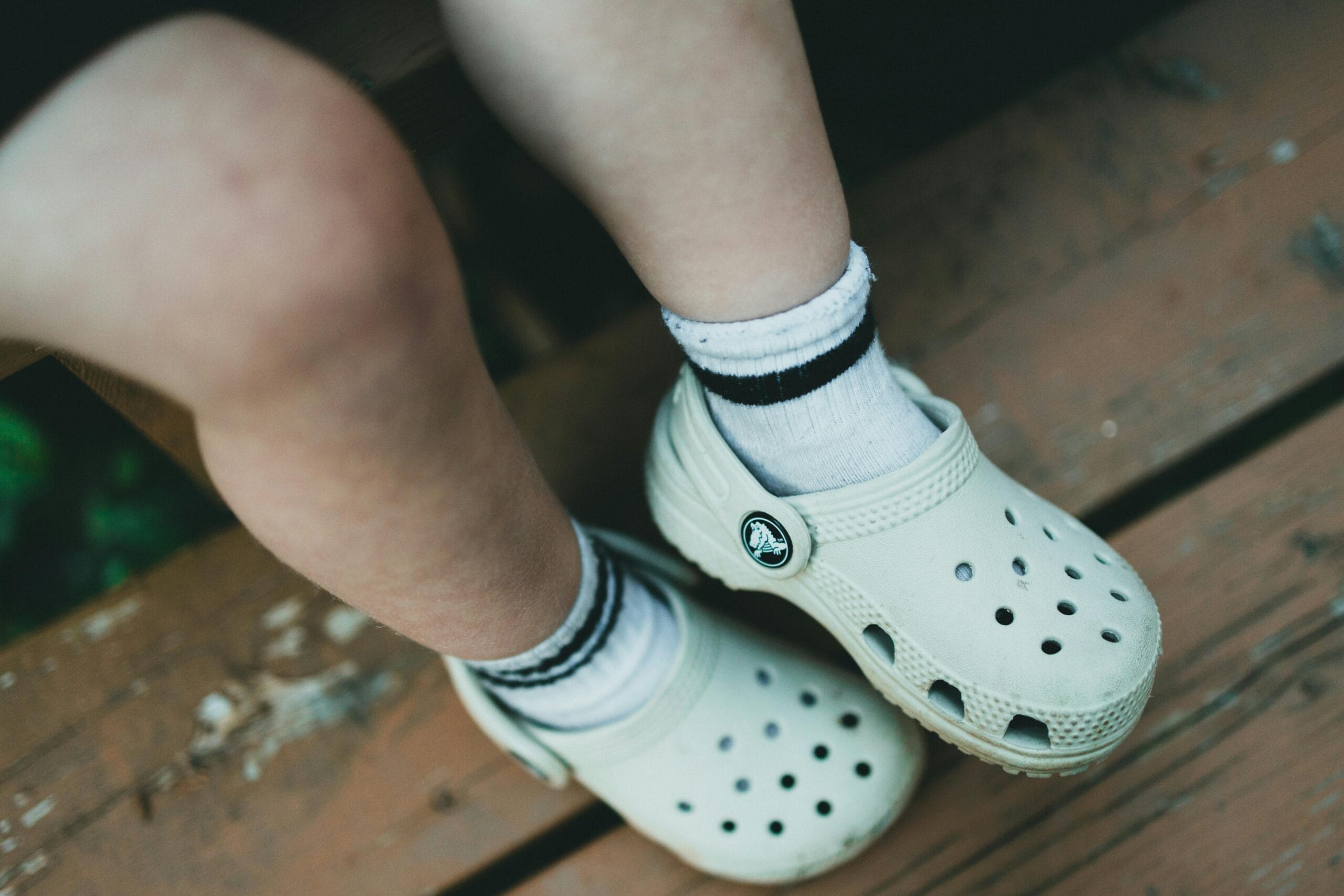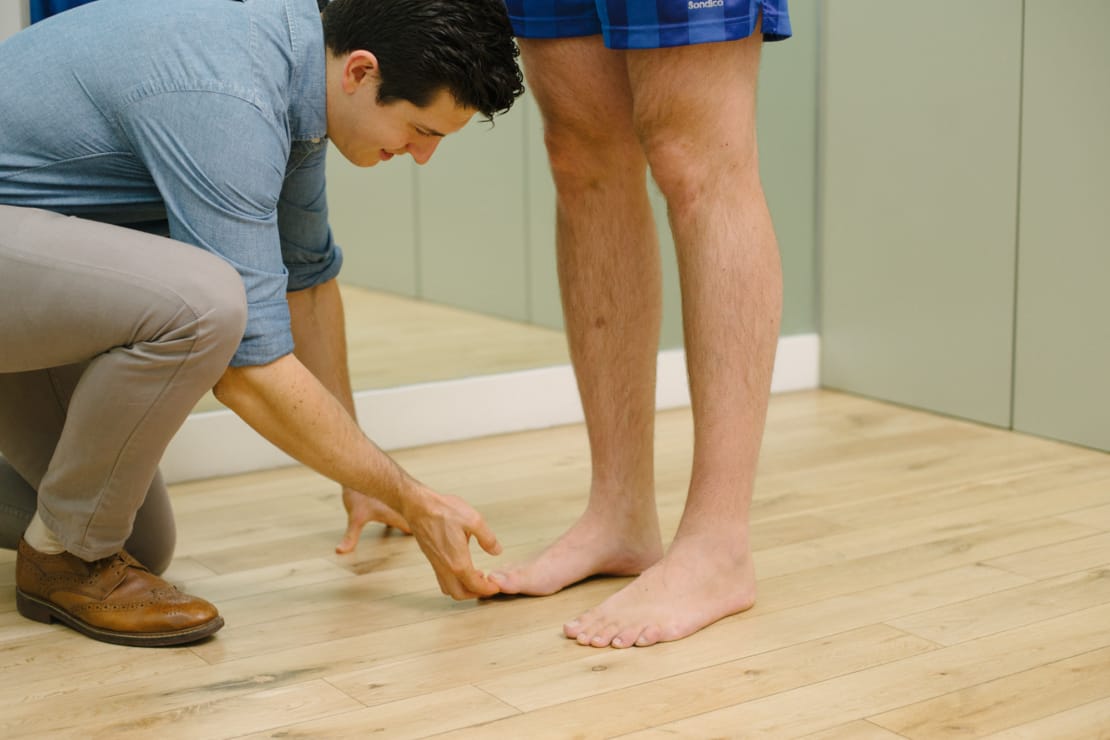Managing Growing Pains in Active Children

Pure Sports Medicine
- 21 September, 2018
- Pain Management
- 3 min read
Growing pains, or its anatomical name Traction Apophysitis is how we describe a type of pain your child may experience following a period or rapid growth and/or increased training loads.

All long bones have a specialised area known as a growth centre (or growth plate), which is responsible for bone lengthening during childhood and adolescence. During periods of growth spurts and rapid skeletal development, the cartilage within this growth centre is relatively weaker than the surrounding bone and tendon attachments. As a result, it becomes more vulnerable to stress and injury, particularly when exposed to repeated traction forces from strong, active muscles, which causes joint and knee pain.
Traction Apophysitis most commonly affects specific sites where major tendons attach to bone — the heel (Sever’s disease), just below the kneecap (Osgood Schlatter disease), and at the base of the kneecap (Sinding-Larsen-Johansson syndrome). Those who report growing pains in their knees are most frequently seen in children and adolescents who participate in sports involving high-impact, repetitive running and jumping. However, Traction Apophysitis can also occur in the upper limb, especially at sites such as the elbow or shoulder, and is more common in those engaged in throwing sports or activities requiring repetitive overhead movements.
Who is At Risk?
Active children and adolescents, particularly those undergoing rapid growth spurts, are more likely to develop Traction Apophysitis. The risk is higher in those who participate in sports or activities, as these movements place repetitive stress on growth plates. Children in competitive sports or those training year-round may be especially susceptible, as their bodies have less time to rest and recover between activities.
What Causes It?
- Rapid bone growth can cause increased baseline tension at the tendon attachment, as the body may not have had a chance to adapt. i.e. bone grows quickly and the muscle has to stretch further from end to end.
- High training load involving repetitive muscle contraction can cause inflammation of the Apophysis.
- Poor biomechanics and technique errors, i.e. flat feet, knock knees, etc. These changes can result in uneven force distribution and can also inflame the Apophysis.
How Do I Know if My Child Has This?
- The onset is usually gradual; in most cases, there will not be a specific incident.
- The pain is localised to the insertion of the tendon (i.e. they may point to the prominence at the top of the shin or the back of their heel)
- There may be swelling at the site of their pain.
- You should always seek early advice from your GP or physiotherapist to rule out any more sinister diagnoses. Obtaining an early diagnosis and an appropriate management plan should reduce the impact on your child’s participation in sport.
- In most cases, the diagnosis can be made through subjective and objective examinations and further investigations are not required. However, on some occasions, the Physiotherapist or GP may request imaging to confirm their diagnosis.
My Child Has Been Diagnosed With a Traction Apophysitis Injury; What Do I Do Now?
- An individualised rehabilitation program should be devised with the help of your physiotherapist to address strength, movement control and flexibility.
- Stretching during acute episodes can cause increased traction and further delay healing. In some cases, massage is more appropriate. As the injury heals and the inflammation settles down, stretching may be appropriate, but you should always check first with your Physiotherapist.
- Usually, activities can be modified with the help of your physiotherapist to allow continued participation in sport.
- In most cases, this is a pain-limiting condition. A very general rule is that physical activity can be continued as long as your child is not limping during or after the activity.
What Is The Prognosis?
In most cases, the pain settles spontaneously and causes no further issues once the growth plate has fused. Growth plates fuse at different rates depending on a number of factors, including gender, body site and other genetic factors.
Until this fusion has occurred, the pain can continue to go up and down with periods of rapid growth and increased training load.
Our aim is to identify and address any issues pertaining to muscle length, muscle strength, technique and biomechanics in order to reduce the excess pressure at the site of the injury. With appropriate management, the painful bouts will be much more manageable and should not affect sports participation to the same degree.
If your child is suffering from Traction Apophysitis, book an appointment with one of our doctors here or contact your nearest clinic.

Advice
Over the last 20+ years our experts have helped more than 100,000 patients, but we don’t stop there. We also like to share our knowledge and insight to help people lead healthier lives, and here you will find our extensive library of advice on a variety of topics to help you do the same.
OUR ADVICE HUBS See all Advice Hubs

